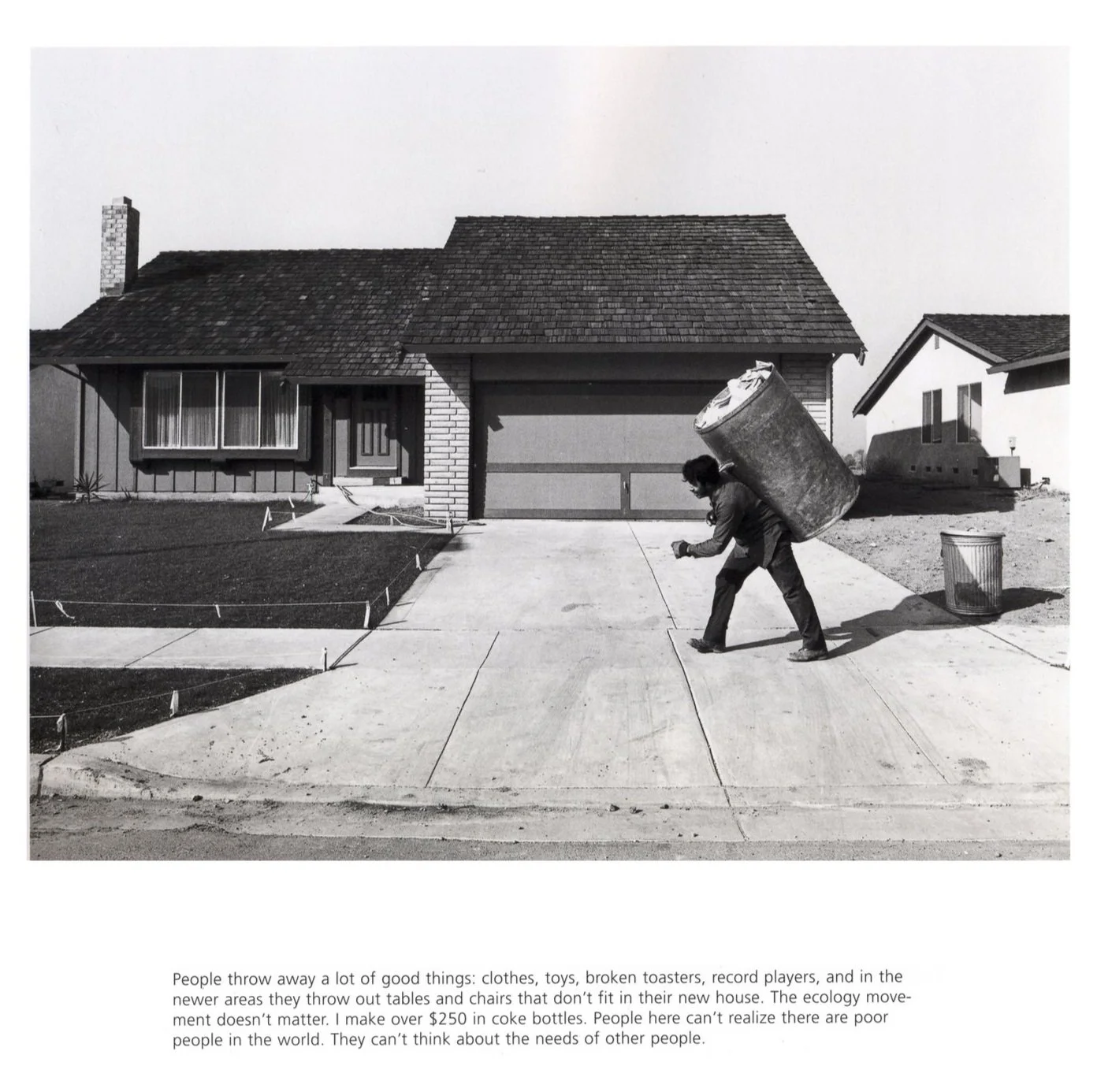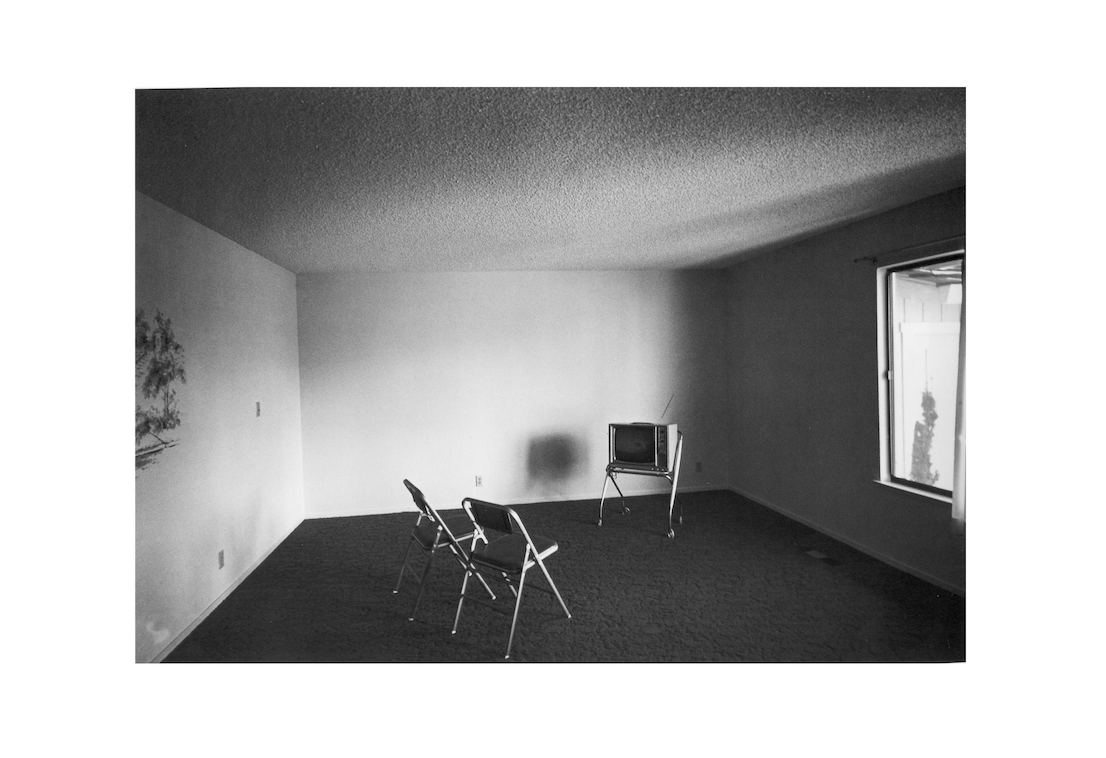Cutting Through the Suburbs
April 5 - May 25, 2014
Gordon Matta-Clark
Bill Owens
James Wines / SITE Architects
& Howard Silver
By undoing a building ... [I] open a a state of enclosure which has been preconditioned not only by physical necessity but by the industry that proliferates suburban and urban boxes as a pretext for ensuring a passive, isolated consumer.
Gordon Matta-Clark
As the site of one of American consumerism’s largest expansions, the suburbs faced its greatest test in the 1970’s, when the postwar suburban fantasy collided with the reality of gas shortages, “stagflation,” and a growing unease with the isolation associated with “bedroom communities”. The optimism that characterized developments like Levittown, Long Island, which provided low-cost housing to returning veterans transitioning from a wartime to consumer economy gradually receded as the recession took hold, and inner-city problems like crime and poverty put further pressure on suburban communities as more people fled the city for the suburbs.
Recognizing recessionary blight and neglect as an opportunity, some of the more experimental artists and architects of this period attempted to pry open the cracks and seams that began to appear in the façade of consumerism, revealing the contradictions that emerged as society shifted from the production of engaged, individual “happiness machines” to a general malaise resulting from an economic downturn. Through literally and symbolically opening the domestic box that housed the consumer, Gordon Matta-Clark’s iconic work Splitting violated the protected realm of suburban isolation and, as the outside came in, introduced unpredictability within the normally controlled, manicured, “natural” setting that characterized the plots of suburban development. Creating a kind of contemporary ruin out of a site destined for renewal, Splitting identified strains in a speculative housing system that claimed to cultivate the family unit while employing an assembly line template from which a unique community had to somehow be forged.
Working in close proximity to Gordon Matta-Clark and sharing his ideas of “Anarchitecture”, James Wines /SITE Architects produced a series of Best Store projects which represent a unique moment in retail architecture. Penetrating the big box structure of the suburban shopping mall, the Best Stores combined the site specificity and interventionist approach of land art with the popular imagery of the commercial strip. Creating facades that seemed to be peeling off (Peeling Wall, 1971), incorporated a whole ecosystem (Hialeah Rainforest Showroom, 1979), or appeared as a ruin from the vantage point of the highway (Indeterminate Façade, 1974), the Best Store showrooms challenged the conformity and caution normally found in retail architecture and were the subject of a series of films by Howard Silver that are notable for their focus on reactions of the public as well as the trades involved in the projects.
Documenting a 1970’s California suburb “from within”, Bill Owens’ pictures accomplish the uneasy task of sidestepping long standing clichés and simplifications associated with suburban life. Often depicted with ironic detachment by artists reluctant to genuinely engage with middle class culture, Owens subjects, perhaps because they’re his neighbors, seem to be somehow immunized from parodic treatment or facile sentiment and instead come across as invested in their environment without having “drunk the Kool-Aid.” Incorporating first-person commentary with the photographs, the near deadpan statements reveal a normalcy qualified by circumstance. Though all the tract homes look more or less the same, the smallest articulation can set one’s apart from their neighbors’ next door.
Collectively representing a transitional period in American suburban life, the work of these artists and architects is part of a moment when conformity and the established order were being called into question on a mass scale as the “counter culture” movement of the sixties resonated with those affected by the faltering economy of the seventies. At a moment of increased income stratification that renders the possibility of sustaining an American middle class far from certain, a look back at critical projects produced during what now looks like its peak may also reveal something about the cultural and economic consequences of the decades in between.
Gordon Matta-Clark
Splitting, 1974 (exhibition copy from Program VI), Transferred to DVD (B&W and color, silent), 10 min 50 sec. (looped). Gift of the Estate of Gordon Matta-Clark 2007.048.006. Collection of Herbert F. Johnson Museum of Art, Cornell University
Installation View
Cutting Through the Suburbs, carriage trade.
James Wines / SITE
Twist Showroom "Best Products", Pen and Ink on Paper, 1980, 21" x 24 2/8" framed
James Wines / SITE
"Greenhouse Showroom" , Sepia Ink on Paper, 1984, 18 1/2" x 21 1/2" framed
James Wines / SITE
"Best Products Showroom - Hialeah, Florida" , Sepia Ink on Paper, 1979, 21" x 24 2/8" framed
James Wines / SITE
"Best Showrooms by SITE", Poster, 36 1/4 x 24 1/4" framed
James Wines / SITE
"BEST Products Showroom, Cutler Ridge, Miami, FL" , Paper, plaster, metal scaled-figurines, wood base, plexi-cover, 1978, 26 3/4" x 24 1/2 x 6 1/4"
James Wines / SITE
BEST Products Showroom, Cutler Ridge, Miami, FL, 1978
Bill Owens
Suburbia, 1973, Black & White Print, Courtesy the Artist, Page 119
Bill Owens
Suburbia, 1973, Black & White Print, Courtesy the Artist, Page 8
Bill Owens
Suburbia, 1973, Black & White Print, Courtesy the Artist, Page 51
Bill Owens
Suburbia, 1973, Black & White Print, Courtesy the Artist, Page 110
Bill Owens
Suburbia, 1973, Black & White Print, Courtesy the Artist, Page 83
Bill Owens
Suburbia, 1973, Black & White Print, Courtesy the Artist, Page 15
Bill Owens
Suburbia, 1973, Black & White Print, Courtesy the Artist, Page 20
James Wines / SITE
"BEST Products Showroom, Cutler Ridge, Miami, FL", Paper, plaster, metal scaled-figurines, wood base, plexi-cover, 1978, 26 3/4" x 24 1/2 x 6 1/4"
Installation View
Cutting Through the Suburbs, carriage trade.

















